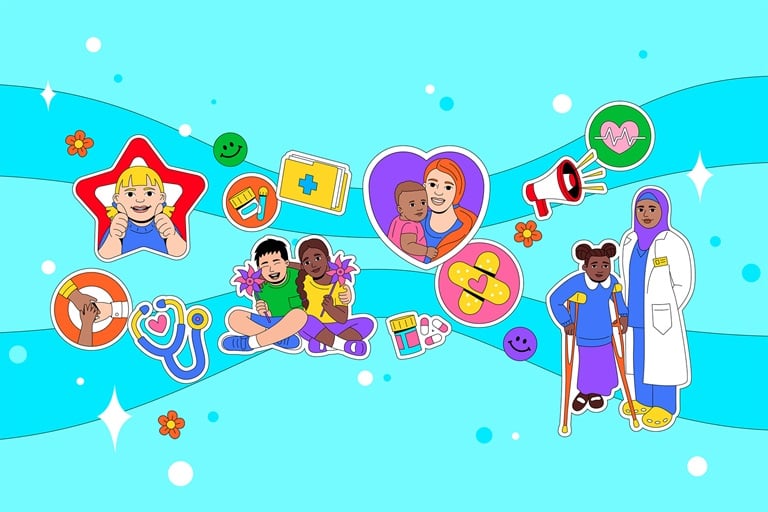
World Patient Safety Day
Calls to action
Calls to action and key messages
- Patients and caregivers
Be your child’s safety champion. Stay informed. Stay involved. Speak up.
- Track and share: keep notes on symptoms, medications and appointments. Share everything with your health care team.
- Keep informed: learn about common medical conditions in children and what to watch out for. Understand hospital safety protocols, such as handwashing and visitor restrictions.
- Have your say: take part in the decisions being taken about your child’s care.
- Ask and confirm: always ask about treatments. Double-check names, allergies and medications before interventions.
- Trust your gut: if something feels off, speak up. You know your child best.
- School-aged children (6+ years)
Be a patient safety star, speak up for your safety!
- Speak up: tell an adult if you feel sick, are hurting, or if something feels wrong during your care. Try your best to describe what you’re feeling, like pain or tiredness.
- Stay safe during care: share your name, birthday and allergies with your doctor or nurse. Ask what your medicine is for. If you get a cut or scrape, ask how to keep it clean while it heals.
- Be a germ buster: wash your hands often. Cover your cough or sneeze with your elbow or a tissue. It’s okay to remind others to do that, too.
- You can help: if something doesn’t look or feel right, tell an adult.
- Health practitioners
Deliver care that’s safe and child-centred.
- Tailor care to the child: adjust for age, weight and development. Verify a child’s identity before any intervention and check for allergies.
- Prevent harm: watch for the main causes of harm such as medication errors, health care-associated infections and diagnostic errors.
- Act early: spot signs of deterioration. Respond promptly.
- Partner with parents and children: communicate clearly. Listen actively. Encourage questions and involve them in the decision-making.
- Coordinate and learn: share information clearly across teams. Report incidents to improve care and contribute towards improvement efforts.
- Health care facility managers
Make safe care the standard for every child, everywhere.
- Streamline safety: apply WHO quality of care standards. Establish core safety systems such as patient identification, safe medication, infection prevention, and care escalation.
- Support the workforce: ensure staff are trained in safe paediatric care skills. Foster teamwork, open communication and standardized care.
- Make care child-friendly: provide appropriate child-friendly spaces and equipment.
- Use data to improve care: establish a safety culture. Support incident reporting by staff and caregivers. Track safety indicators and act on insights.
- Policy-makers and health care leaders
Invest in safe care for children. Save lives and resources.
- Embed paediatric safety within policy: integrate safety into national health policies and strategies.
- Invest in safer care: build workforce capacity and equip facilities with the tools, training and infrastructure needed to keep children safe.
- Lead with data and learning: strengthen data systems. Promote a culture of safety and learning.
- Engage communities: involve civil society, patient advocates, child protection groups and educators in building safer systems and promoting patient safety in schools.
- Teachers, educators and school health staff
Empower children to participate in their health care.
- Empower children: teach them to speak up, ask questions and share symptoms or concerns.
- Create safe spaces: listen with empathy. Reduce fear around health care.
- Promote safety education: partner with health workers. Build children’s hygiene habits, health literacy and awareness of patient safety.
- Practice and celebrate: recognize and praise children when they make safe health decisions, such as regular handwashing and coughing into the elbow.
- Civil society organizations and advocacy groups
Raise awareness. Mobilize communities. Demand safe care for every child.
- Raise awareness: promote health literacy. Share clear, accessible information on patient safety risks and the prevention of harm.
- Promote equity: advocate for safe care in all settings, especially those in low-resourced, marginalized or humanitarian settings, where risks are greatest.
- Amplify voices: represent patients in health dialogues. Co-create safer systems with health workers.
